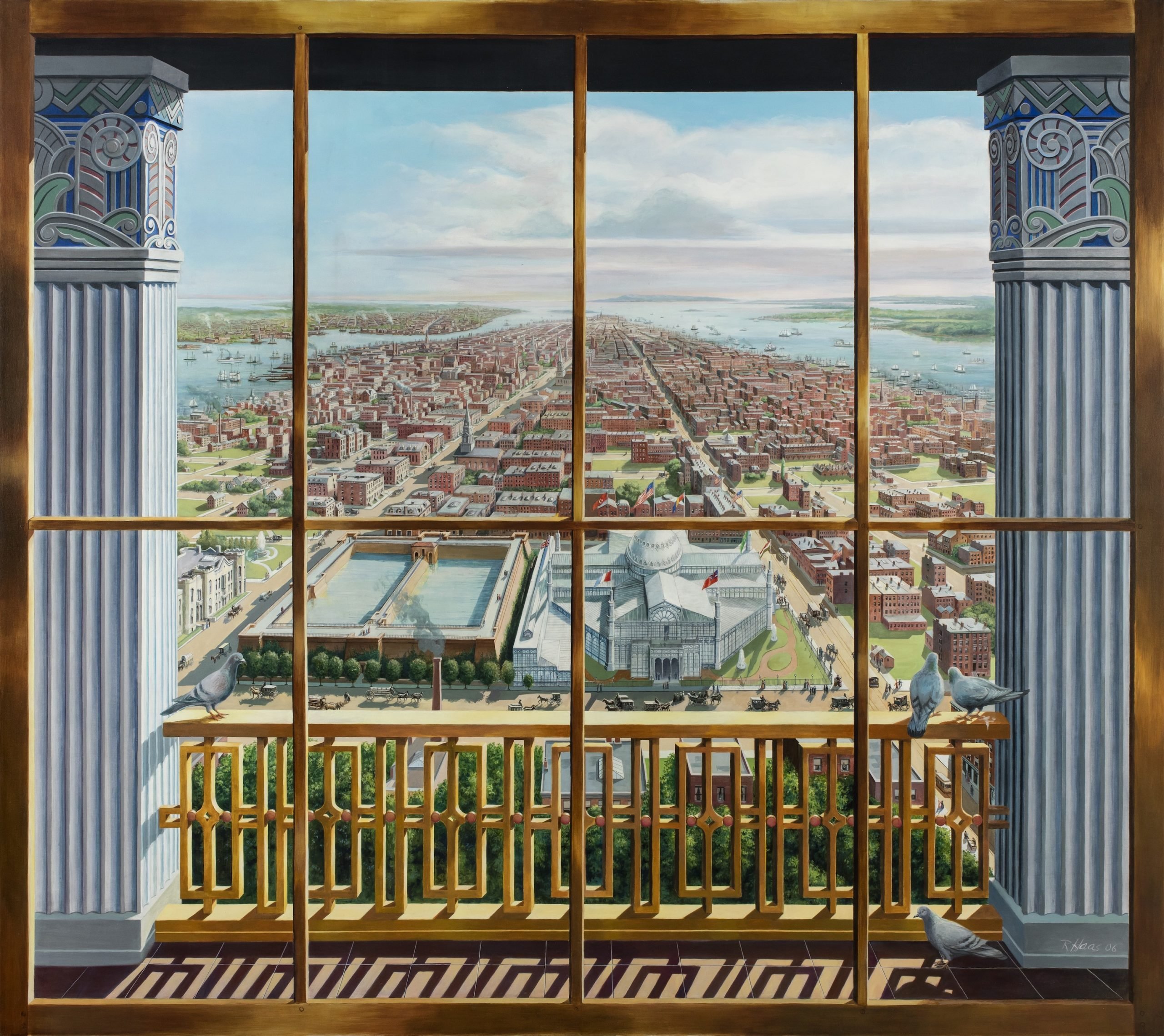
Deep in the bowels of Penn Station, there’s a small sign that reads “Penn RR Trains,” its red arrow forever pointing passengers towards trains that no longer run for a station that once was. It’s a prosaic leftover of New York’s most notorious demolition, that glorious Beaux-Arts masterpiece that made travelers commuting through it feel “like a god,” as the historian Vincent Scully put it. The disappearance of such landmarks is the theme of the New-York Historical Society’s latest exhibition “Lost New York.”
The show, which is set to run through September 29, is a reminder that to live in New York is to constantly feel the hands of change—new towers block beloved views, favorite restaurants close, familiar neighborhoods morph unrecognizably.
Jules Crow, Pennsylvania Station Interior (1906). Photo: New-York Historical Society.
Roving haphazardly across 300-odd years of the city’s history, “Lost New York” makes the point that these places do not really vanish, but endure in maps, photographs, paintings, ephemera and—sometimes most powerfully—through the anecdotes of residents.
From the start, in fact, the show presents the New York experience as a thing in constant flux. A painting at the entrance shows the Knickerbocker Omnibus, a horse-pulled 12-seater carriage, the likes of which ran designated routes in lower Manhattan beginning in the late 1820s. Soon, steel tracks were laid for streetcars, offering passengers a smoother and faster ride.
William Seaman, Knickerbocker Stage Line Omnibus (ca. 1850). Photo: New-York Historical Society.
Though affordable and efficient, the cars added to the city’s sanitation quagmire, a problem Dr. Rufus Henry Gilbert addressed with his patented elevated railway that became a reality in 1878. There’s a wood and metal model of the Sixth Avenue line alongside Going Home, a painting by Lionel Reiss that captures the colorful bustle of New Yorkers climbing the stairs to the train.
Nearby, there’s a memento from the city’s train system a century on: a Bowery station sign marked with Keith Haring’s crawling child and barking dog.
It’s a gap of a century and a half that is starkly presented in a pair of paintings by Richard Haas. Both look south from 42nd Street. In 1855, the view from the Latting Observatory (then the country’s tallest structure at 315 feet) is bucolic—buildings are of brick, sail ships traverse the East River, and farmland stretches to a visible horizon. By 1994, the view is entirely obscured by silver and brown towers, the only green belonging to the stained gargoyles hunched at the window ledge. One constant? Pigeons and their detritus.
Unidentified photographer, Manhattan: the Hippodrome, Sixth Avenue between 43rd Street and 44th Street (1905). Photo: New-York Historical Society.
The museum picked through its archive to present some of the city’s colossal buildings lost during this time and beyond. There’s Crystal Palace, a marvel of glass and steel described by Walt Whitman as “loftier, fairer, ampler than any yet.” A Francois Courtin lithograph shows it abuzz as it hosts an exhibition on global industry. It burned to the ground in 1858.
The Croton Reservoir stood nearby, a 50-foot-tall engineering feat that would make firefighting, sewage, and street-cleaning possible. It too was demolished and in 1900, with the New York Public Library in Bryant Park rising on its stone foundation.
François Courtin, New York Crystal Palace for the Exhibition of the Industry of All Nations (1853–54). Image: New-York Historical Society.
The list of such disappearances in “Lost New York” runs on and on—the old Yankee Stadium (the House that Ruth Built), the New York Hippodrome in which Harry Houdini once disappeared a 10,000-pound elephant, the old Federal Hall which sat the first Confederation Congress in 1784. There’s also a fragment of the giant gilded statue of Britain’s King George III that stood in Bowling Green before it was torn down and turned into bullets during the Revolutionary War.
Another sculpture to have been destroyed is “Lift Every Voice and Sing” by Augusta Savage. It depicted bodies arranged like strings in a harp and was the only work of a Black woman commissioned for the World’s Fair in 1939. There’s a miniature on display in this show and a promise that the initiative to reconstruct the monument is underway.
“Lost New York” is on view at New-York Historical Society, 170 Central Park W, New York, through September 29.